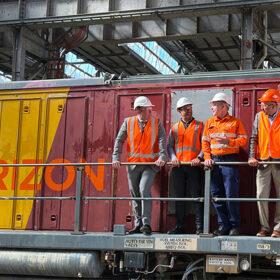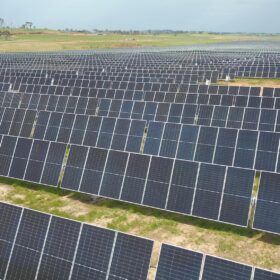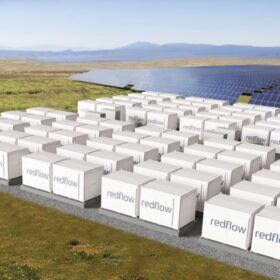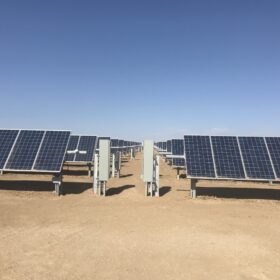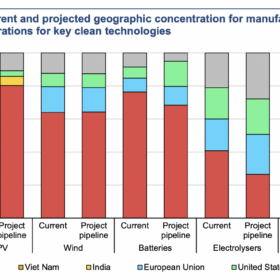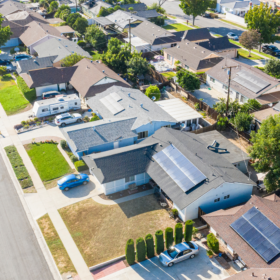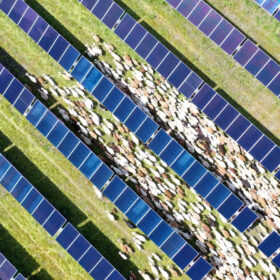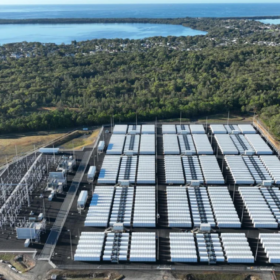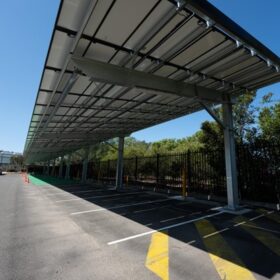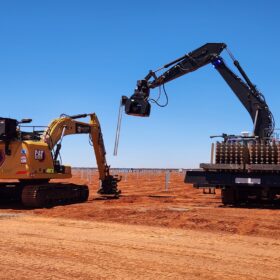Rail operator eyes Australian first with battery-electric retrofit
Australia’s largest rail freight operator Aurizon has contracted Progress Rail to convert one of its diesel locomotives to full battery electric operation, paving the way for the greening of its freight-haul rail fleet.
Investment pipeline cause for concern as clean energy construction climbs
Construction of eight large-scale renewable energy generation and storage projects with a combined capacity of more than 1 GW commenced in Australia in the first quarter of 2023 but the Clean Energy Council has warned the project pipeline is drying up as “headwinds” increase.
Redflow to build 20 MWh redox-flow battery in California
Australian redox-flow battery manufacturer Redflow will build one of the world’s largest zinc-based battery energy storage systems in the United States after inking a multi-million-dollar deal with the California Energy Commission.
Quinbrook to target domestic market with Sun Cable project
Renewables investor Quinbrook Infrastructure Partners has confirmed its focus is on the onshore potential of Sun Cable’s estimated $35 billion (USD 22.76 billion) Australia-Asia PowerLink project that aims to deliver up to 800 MW of renewable energy into Darwin and export solar from Australia to Singapore via a submarine transmission link.
Global investment in clean energy nearly doubles that of fossil fuels
For every dollar invested in fossil fuels, 1.7 dollars are invested in clean technologies. Five years ago, it was a one-to-one ratio, said the International Energy Agency.
Trina to build 25 GW ingot factory, Longi reduces wafer prices by 30%
Longi said today it cut the prices of its wafer products by 30% and Trina announced it will build a 25 GW monocrystalline ingot factory in the Sichuan province. Furthermore, the National Bureau of Statistics (NBS) revealed that the Chinese PV industry produced 39.92 GW of solar cells in April, and Datang Group unveiled the results of a tender to procure 8 GW of solar panels.
Gargantuan 1.4 GW / 2.8 GWh battery approved for NSW
The New England megaproject just became even more mega, and is now set to house a 1.4 GW / 2.8 GWh battery – taking the crown for Australia’s biggest battery. Developer ACEN Australia says the NSW government has approved its expanded battery proposal, which is set to go in next door to its 720 MW New England Solar project.
‘Huge subsidy fest’: Australia has the critical materials, but can it compete in the manufacturing race?
A global race is underway to capture the manufacturing market for clean energy technologies. While lady lucky has certainly shone on Australia, competition is fierce, experts say.
VPP consolidation platform seeks to remedy the sales impasse for installers
Despite their promise, adoption rates of Virtual Power Plants (VPPs) in Australia have been underwhelming. Head of Renewable Energy Finance at Plenti, Louis Edwards, says the issue stems from VPP operator’s overlooking their point of sale. “It’s too much risk the installer takes and they don’t do it,” he tells pv magazine Australia.
Sheep grazing team to reduce solar mowing costs by more than 44%
About 70 Katahdin breed sheep were dropped off at the Oberlin College campus in Ohio last week. They will graze through mid-June, stomping grass and weeding the solar field in a move aimed at reducing operations and maintenance costs.
